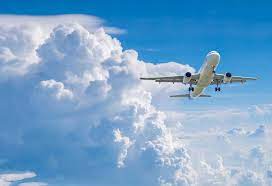
Ever wondered what it takes to keep an airplane flying smoothly? It’s easy to think of travel costs as simply the price of a ticket, but behind every flight is a huge range of expenses that make sure planes stay in the air and passengers remain safe. If you’ve ever been curious about why airline tickets vary so much or what drives those prices, you’re not alone.
The Cost of Aircraft Maintenance
One of the biggest factors airlines have to budget for is aircraft maintenance. Unlike cars, planes can’t afford to have anything go wrong mid-flight. So, rigorous maintenance schedules ensure that every single part is functioning as it should.
For starters, maintenance checks are divided into several levels:
- A Checks – This is a routine inspection that happens about every 500 flight hours. It includes checking the aircraft’s engines, electrical systems, and landing gear, as well as general cleanliness.
- B Checks – Less frequent but more detailed, B checks happen every 6 to 8 months and dive deeper into various systems.
- C Checks – These are the most thorough inspections and can take several weeks. The plane is essentially disassembled and rebuilt, with every component carefully examined for wear and tear.
- D Checks – The rarest and most expensive checks, these take place about every six years. During a D check, the entire aircraft is taken apart and inspected to ensure everything is in tip-top shape.
Each of these checks costs money, time, and resources, which contributes to the overall price of keeping an airline running smoothly.
Fuel: The Lifeblood of Aviation
There’s no getting around it—fuel is one of the biggest costs for airlines. But it’s quite simple: without fuel, planes don’t go anywhere, and it’s a cost that airlines have to factor into every ticket.
Personnel Costs
It takes a lot more than just pilots to get a plane from point A to point B. There’s a whole team of people behind the scenes, from flight attendants to mro services, ground crew, air traffic controllers, and customer service representatives. Let’s not forget the executives and managers who oversee operations and logistics. When you consider all the people involved, it’s easy to see why personnel costs are such a big part of what keeps planes flying.
Specialized Fluids and Parts
Aircraft maintenance doesn’t just involve checking mechanical components; planes also require a variety of specialized fluids to function properly. One such fluid is Skydrol LD-4, a type of hydraulic fluid used in aircraft systems. This fluid ensures the smooth operation of flight controls and landing gear, which are essential for safety. While it’s just one part of the puzzle, specialized fluids like Skydrol LD-4 highlight how specific and detailed aircraft maintenance can be. From keeping hydraulic systems working to ensuring that engines are properly lubricated, these fluids are crucial for maintaining airworthiness.
Beyond that, airplanes need a steady supply of spare parts, from landing gear components to electrical wiring. Airlines stockpile these parts so they can be replaced quickly if something breaks down, which minimizes downtime and keeps flights on schedule. These specialized parts aren’t cheap, but they’re essential for keeping planes safe and operational.
Airport and Airspace Fees
Every time an airline lands or takes off from an airport, it incurs a fee. These airport fees are determined by the size of the aircraft, the services provided, and the airport itself. Larger international hubs tend to charge more than smaller regional airports, and the level of service (like baggage handling, passenger boarding bridges, and security) all add up to the final bill.
But it doesn’t stop there—airlines also have to pay for using airspace. Each country charges airlines for flying through its airspace, and these fees vary depending on the country and the distance covered.
In-Flight Services
Let’s not forget the cost of providing in-flight services to passengers. Meals, snacks, beverages, and even the entertainment systems all come with a price tag. For long-haul flights, these amenities can really add up. Airlines often have to balance offering attractive services to passengers while keeping costs reasonable.
- Gourmet Meals – Multi-course options tailored to your dietary preferences.
- Premium Beverages – Fine wines, champagnes, and crafted cocktails.
- Personal Entertainment Systems – High-definition screens loaded with the latest movies, TV shows, and games.
- In-Flight Wi-Fi – High-speed internet to keep you connected mid-flight.
- Customised Comfort – Personal sleep kits, noise-cancelling headphones, and high-quality bedding.
Investments in New Technology
Finally, modern airlines are always looking for ways to stay competitive and improve efficiency. This means investing in new aircraft with better fuel efficiency, upgrading technology for smoother operations, and even improving customer service through digital platforms.
Flying Isn’t Cheap, But It’s Worth It
Air travel has become more accessible and affordable over the years, but the costs behind the scenes are still significant. From maintenance and fuel to personnel and specialized parts, there’s a lot that goes into keeping a plane safe and reliable.
Write and Win: Participate in Creative writing Contest & International Essay Contest and win fabulous prizes.


